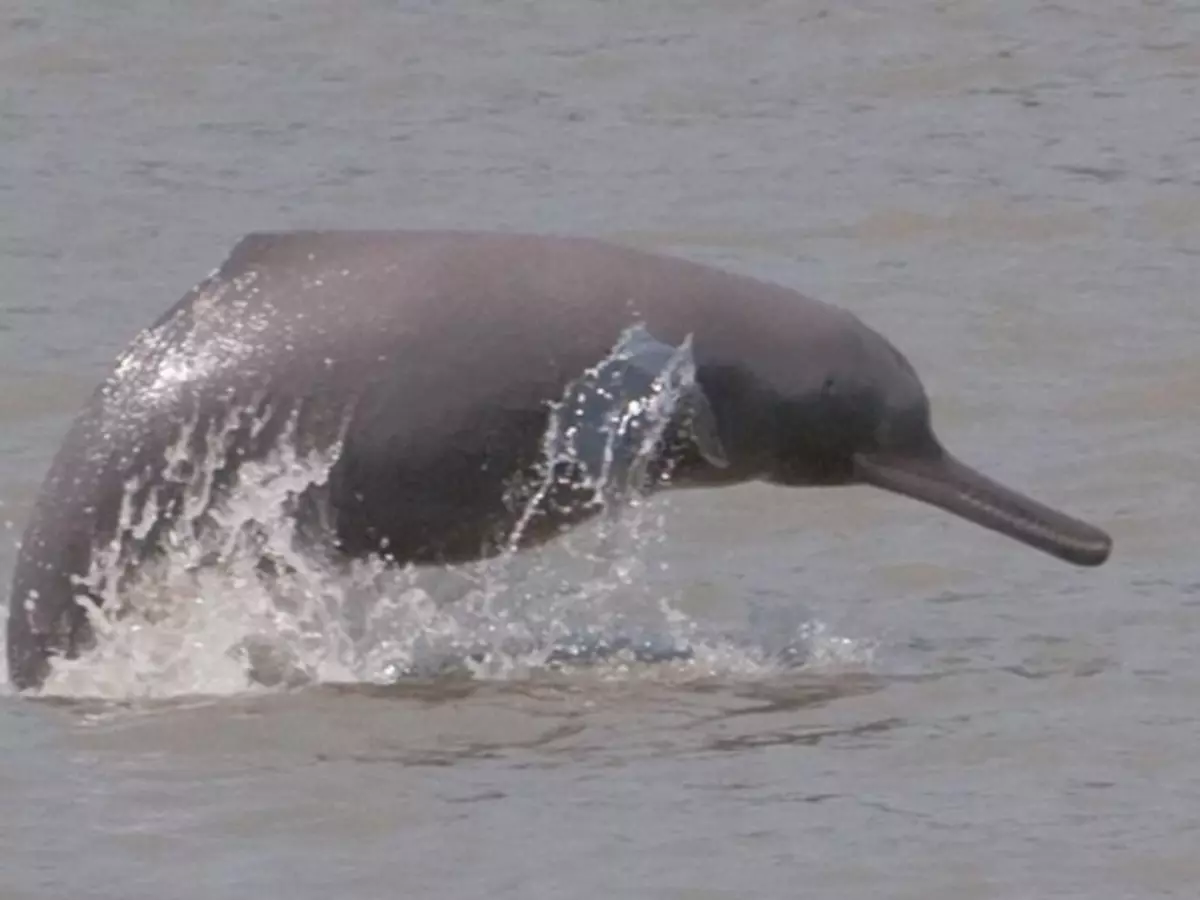With Water Pollution Down, Dolphins Reportedly Spotted Near Kolkata After Almost 3 Decades
The rare South Asian River Dolphin also known as the Ganges Dolphin was spotted near the ghats in Kolkata. It is apparently the only freshwater dolphin categorised as critically endangered so its recent appearance came as a pleasant surprise to environmentalists. The reduction in water pollution and human movement are the biggest reasons for their reappearance.

Ever since the lockdown came into effect, plenty of reports have pointed out an overall reduction in water and air pollution as a result of which animals thought long lost, have made a comeback. Like the flamingos that turned a creek in Mumbai pink or the simply the fact that so many animals have been spotted on the streets in India. Clearly, the lockdown is doing these creatures some bit of good.
 Image for representation/asom.in
Image for representation/asom.in
According to reports, the rare South Asian River Dolphin, also known as the Ganges Dolphin, was spotted near the ghats in Kolkata. It is apparently the only freshwater dolphin categorised as 'critically endangered' so its recent appearance came as a pleasant surprise to environmentalists.
According to TOI. 30 years ago, Gangetic dolphins were a normal sight at various Ghats in Kolkata, but due to increased water pollution they stopped showing themselves.
After years, the South Asian River Dolphin, commonly known as Ganges Dolphin, has been spotted from different ghats in Kolkata. These mammals, the only freshwater dolphins in the world, have been categorised as 'critically endangered' and have not been seen near Kolkata for years pic.twitter.com/o9HLnz2g5h
¡ª Shiksha IAS Academy (@ias_shiksha) April 22, 2020
Biswajit Roy Chowdhury, a senior environmental activist who spotted the Dolphins at a place called Babughat in Kolkata told TOI that the reduction in water pollution and human movement are the biggest reasons for their reappearance. The global population of Gangetic dolphins is barely between 1,200 to 1,800.
 Source/Ravindra Kumar Sinha/Down To Earth
Source/Ravindra Kumar Sinha/Down To Earth
According to TOI, water quality in the river Hoogly had improved due to reduced pollution caused by relentless industrial activity. Environmentalists and wildlife photographers have allegedly spotted the endangered mammals in areas like Babughat and near the outskirts of the city.
A team experts from the Worldwide Fund for Nature-India mapped the abundance of and threats to Gangetic dolphins in the Hooghly. One of the most "striking features" of the study was that the endangered mammals were sighted in highly polluted pockets of the river.
The study found that apart from pollution, one of the biggest threats to the existence of dolphins in the Hoogly river was human activity and transport.
